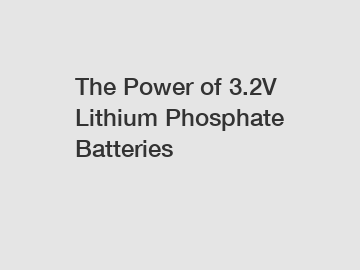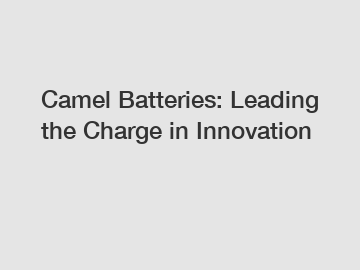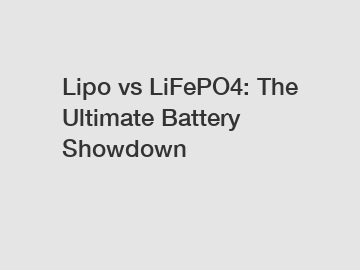How Does 24V 100Ah Lithium Battery Work?
The 24V 100Ah lithium battery is a power-packed component widely used in various applications, from solar energy storage to electric vehicles. Understanding how it works not only helps you choose the right battery for your needs but also provides insights into its efficiency and longevity. In this article, we'll delve into the working mechanism of this battery, its components, and the advantages it offers.
What is a Lithium Battery?
Lithium batteries are rechargeable batteries that store energy using lithium ions. The fundamental operation is based on the movement of lithium ions between the positive and negative electrodes during charging and discharging. A 24V 100Ah lithium battery comprises multiple lithium cells connected in series and parallel to achieve the desired voltage and capacity.
Understanding the 24V and 100Ah Ratings
The "24V" in the battery's specification indicates the nominal voltage. In practical terms, lithium cells possess a nominal voltage of about 3.2-3.7V, which means that for a 24V system, typically seven cells are arranged in series. The "100Ah" represents the amp-hour rating, defining the battery's capacity to deliver a current of 100 amps for one hour or 50 amps for two hours.
Key Components of a 24V 100Ah Lithium Battery
- Cells: Each cell houses a positive electrode (cathode), a negative electrode (anode), and an electrolyte. The cathode is usually made of lithium iron phosphate (LiFePO4) or lithium cobalt oxide (LiCoO2), while the anode often consists of graphite.
- Battery Management System (BMS): This crucial component monitors the health and safety of the battery. The BMS ensures balance among cells, regulates voltage and current, and prevents overcharging or deep discharging.
- Connections: Wires and terminals connect the cells, enabling the flow of electricity. These components must be designed to handle the battery's voltage and current ratings.
How Does It Charge and Discharge?
During charging, an external power source applies voltage to the battery, prompting lithium ions to move from the cathode to the anode. This movement stores electrical energy within the battery. Conversely, during discharge, when the battery powers a device, the lithium ions flow back to the cathode, releasing stored energy in the process.
See also:8 Surprising Camel Milk Benefits | Desert Farms | 100% Pure
Are 3.2V LiFePO4 Batteries The Future?
Are AGM batteries cheaper?
Understanding Exit Sign Illumination Requirements: A Guide
What are electric car batteries made of?
Emergency Lights Battery Replacement: Best Tips to Save Money?
How can Camel residential energy storage revolutionize homes?
Efficiency and Longevity
One significant advantage of a 24V 100Ah lithium battery is its efficiency. Typically, lithium batteries have a round-trip efficiency of around 95%, meaning very little energy is wasted during the charging and discharging process. Coupled with their ability to handle deep cycling—a feature that allows them to discharge up to 80% of their capacity without damage—these batteries often outlast traditional lead-acid alternatives by several years.
Applications in Real Life
These batteries find applications in various sectors, including renewable energy systems, electric vehicles, and backup power supplies. In solar energy setups, a 24V 100Ah lithium battery can effectively store excess energy generated during peak sunlight hours for use when sunlight is not available.
In the realm of electric vehicles, this battery serves as a reliable and lightweight power source, enhancing performance and range. Moreover, in marine and RV applications, it provides robust energy solutions with minimal maintenance requirements.
Understanding how a 24V 100Ah lithium battery works can assist in making informed decisions when considering energy storage solutions. With their advanced technology and numerous advantages, they represent a significant progression in energy storage capabilities, paving the way for a sustainable future.
If you want to learn more, please visit our website 12V 38Ah Gel Battery, 2V 300Ah AGM Deep Cycle Battery for wind power, Lead Acid Battery to Croatia.
See also:Ultimate Guide to 3.6V Rechargeable Batteries: Everything You Need to Know
Is Camel Energy Inc. the future of renewable fuel technology?
Why do emergency lights still flicker?
How to Reach Camel Customer Service Number
Revolutionizing Emergency Lighting: Is LED Essential?
Revolutionizing Heavy Trucks: The Truth About Lithium Ion Batteries
Dewalt Battery Exporter: Your Ultimate Guide to Finding Reliable Suppliers









